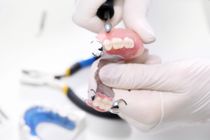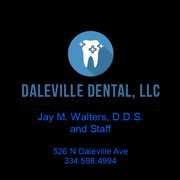
If you’ve lost some or all of your natural teeth or need to have them extracted due to decay or damage, your dentist might recommend dentures. Dentures look and function like natural teeth, and there are a few options to choose from depending on your needs. Here’s a guide to the three most common types.
An Introduction to Denture Types
Complete
Complete dentures are typically ideal for people who are missing most or all of their teeth on the top or bottom of the mouth. These devices are fabricated with an acrylic base that holds a set of artificial teeth. It’s placed on top of the gums on the lower or upper jaw. In cases where some natural teeth remain, the dentist will need to remove those before fitting the dentures.
Partial
 People who are missing only some teeth may benefit from partial dentures, also known as dental bridges. These false teeth are attached to a plastic base, which is affixed to a metal frame. The frame is connected to the natural teeth to hold the false ones in place. Dentists can also use crowns when connecting partial dentures, fitting these on top of damaged natural teeth.
People who are missing only some teeth may benefit from partial dentures, also known as dental bridges. These false teeth are attached to a plastic base, which is affixed to a metal frame. The frame is connected to the natural teeth to hold the false ones in place. Dentists can also use crowns when connecting partial dentures, fitting these on top of damaged natural teeth.
Implant-Supported
With implant-supported dentures, the dentist inserts metal implants into the jawbone, which fuses to the post for a permanent connection. The dentures are then attached to the implants. These are the most stable option. However, your bones and gums must be healthy to support this option. Because of the use of implants, these dentures are more expensive than other options.
If you’re a Dale County, AL, resident in need of dentures or other dental services, turn to Daleville Dental LLC. From general to restorative and cosmetic dentistry, they provide a range of care options at affordable prices for patients of all ages. Call (334) 598-4994 to schedule an appointment or visit the website to learn more about how they can help you.
About the Business
Have a question? Ask the experts!
Send your question

